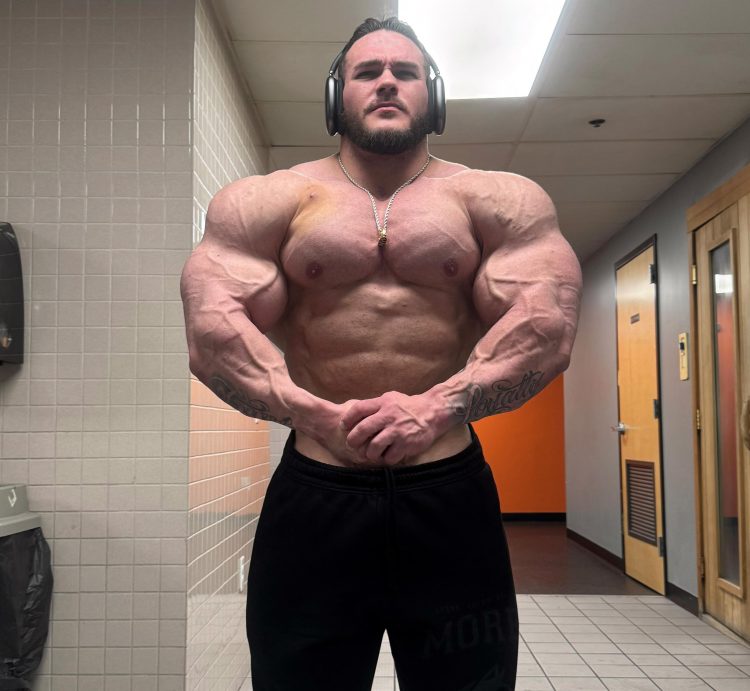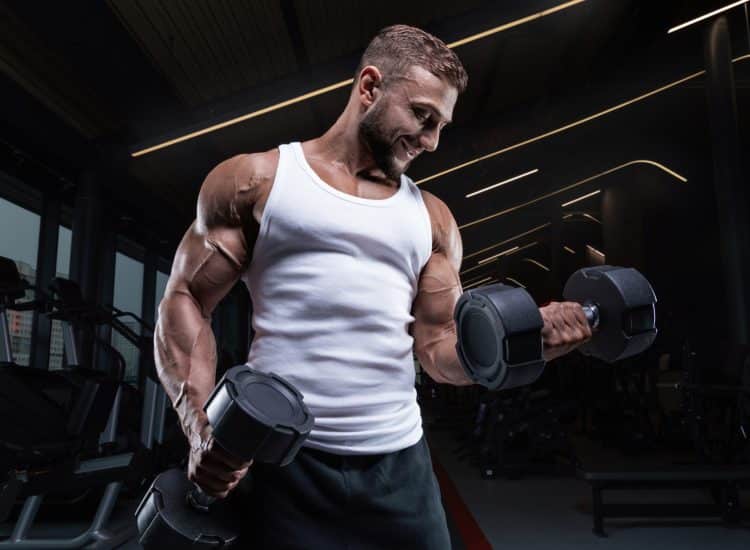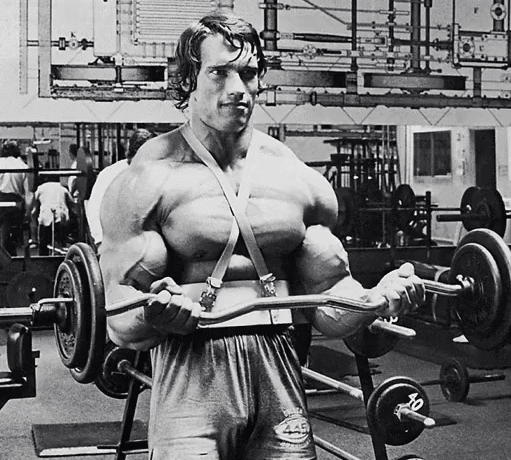Bodybuilders are pump chasers.
A muscle pump is the feeling of swelling and tightness you get during an exercise. It might also improve your vascularity and muscle definition if you are at a low enough body fat percentage.
Anyone who has ever lifted weights knows the feeling of a muscle pump.
Muscle pumps can be addictive. Although most don’t understand their mechanisms or effects, they know attaining one is good news. Muscle pumps are among the most satisfying feelings in the gym.
It reinforces that you’ve maximized muscle stimulation and are in the sweet spot to boost hypertrophy.
Muscle pumps aren’t just for aesthetics; they are scientifically proven to help you advance your strength and muscle-building ambitions. A study published in the Journal of Strength and Conditioning Research found a positive correlation between the degree of muscle swelling immediately after a resistance training session and subsequent muscle growth. (1)
What is a Muscle Pump?
‘Muscle pumps’ are among the most common gym jargon.
However, only a few people know there is a scientific term for it—transient hypertrophy. Transient hypertrophy is the temporary enlargement of muscles when fluids, including blood and water, accumulate in them during exercise.
The fluid accumulation occurs in the muscle’s intracellular and interstitial spaces.
How Muscle Pumps Work
Now that you know the basics of muscle pumps, it’s time to learn about the physiological processes behind them. Here are the mechanisms that lead to transient hypertrophy:
Cellular Swelling (Sarcoplasmic Hypertrophy)
Sarcoplasmic hypertrophy refers to a type of muscle growth that occurs when the volume of sarcoplasmic fluid in muscle cells increases. Sarcoplasm is the fluid that surrounds the myofibrils in muscles and contains ATP, glycogen, creatine phosphate, and water.
When you lift weights or perform a bodyweight exercise, the target muscle cells get filled with fluids, leading to sarcoplasmic hypertrophy and massive pumps.
A study published in PLOS One concluded that sarcoplasmic hypertrophy might significantly contribute to muscle size increases in the initial phases of a strength training program. (2)
Metabolic Stress
High-intensity training can result in a buildup of metabolic byproducts in the muscles, the most common being lactic acid.
Have you ever experienced a burning sensation in the target muscles during an exercise? That’s lactic acid at play.
Although lactic acid can cause muscle fatigue, which can hamper your performance, it is one of the primary factors for transient hypertrophy.
Metabolic byproducts act as little magnets in the muscles and pull extra fluid into the cells. This enhances the swollen and tight feeling you get during a muscle pump. Metabolic stress and mechanical tension are the primary drivers of hypertrophy. (3)
Vasodilation
When you start pumping iron, your body adapts by expanding the blood vessels (vasodilation) to deliver more blood to the working muscles. This helps get more oxygen, nutrients, and hormones to the target muscles, which promotes the pumping effect.
Vasodilation also helps remove metabolites from the muscles, boosting recovery between sets and post-workout. (4)
Why Do Bodybuilders Chase the Pump?

With the mechanisms of transient hypertrophy out of the way, let’s talk about why bodybuilders chase muscle pumps in the first place:
- Promotes Muscle Growth: Research has shown that the greater the muscle swelling during a training session, the greater the scope of hypertrophy induced after the workout. (1)
- Boosts Nutrient Delivery: Most bodybuilders eat a balanced diet comprising nutrient-rich whole foods. Transient hypertrophy involves a heightened blood supply to the target muscles, which can aid in post-workout recovery and muscle repair.
- Mind-Muscle Connection: Lifters who have ever experienced a muscle pump will agree that it is near impossible to have one without developing a solid mind-muscle connection. This connection can be carried over to other exercises, enhancing results.
Factors Influencing Muscle Pumps
If it were up to a bodybuilder, they would have a muscle pump as soon as they stepped inside a gym.
Achieving transient hypertrophy depends on multiple factors and is easier said than. Knowing how you can achieve and maximize pumps can help take your gains to the next level. Given below are the factors that you must monitor:
Training Style
Here is how your training program can influence pumps:
- Rep Ranges: You are more likely to achieve pumps by performing a higher number of reps. That’s not all. You must all focus on contracting the target muscles throughout the range of motion (ROM), especially in the fully shortened position, to cause more blood to flow into the muscles.
- Rest Period: Shortening rest durations between sets can trap blood in the muscles, which can promote pumps. Limit your rest periods to 60 seconds to achieve muscle-ripping pumps.
- Time Under Tension (TUT): A slower rep cadence increases the muscles’ TUT, which can contribute to pumps. I have my clients follow a 3-1-1-2 (eccentrics, bottom, concentrics, and top) rep tempo for better muscle pumps.
Nutrition

Contrary to what most people think, pumps aren’t solely dependent on your training techniques. What you ate the day prior and leading up to the workout can also dictate the quality of the pumps. You must consider the following factors:
- Carbs: The body stores carbohydrates as glycogen to burn as fuel. Each gram of glycogen pulls and retains water. Hence, eating a high-carb meal before a session can lead to nastier pumps. I’d also recommend eating a decent amount of sodium before your workout to amplify pumps.
- Hydration: Drinking at least a gallon of water daily ensures optimal blood volume, which can promote muscle pumps. Conversely, dehydration can lower the probability of getting pumps.
- Supplements: Thanks to advancements in nutrition science, we now have supplements that can boost muscle pumps. Nitric oxide boosters, which usually contain ingredients like citrulline or beetroot extract, dilate the blood vessels and increase blood flow to the target muscles, resulting in better pumps.
Pro Tip: A lower body fat percentage (minimal glycogen stores) and cutting water are the biggest reasons why competitive bodybuilders struggle to achieve pumps as they get closer to a competition.
Individual Factors
Pumps can vary depending on multiple individual factors like:
- Genetics: Some people are better predisposed to achieve muscle pumps than others due to their genetic structure.
- Muscle Fiber Composition: Humans have two types of muscle fibers: fast and slow-twitch. The former generally pump up easier as they can generate force quickly. High-intensity exercises are the best way to pump up fast-twitch muscles.
Is the Pump Necessary for Muscle Growth?
A lot has been said about how pumps can help build muscle. However, are they really necessary to promote hypertrophy?
There are two schools of thought here. The first group believes you must get a muscle pump in every workout to induce gains. The other group claims they have not experienced a pump in months, but that hasn’t hindered their progress.
So, which group should you believe?
Here is everything you need to know about muscle pumps and growth:
Link Between Muscle Pumps and Hypertrophy
Several studies back the notion that muscle pumps can indeed promote muscle and strength gains (1). Transient hypertrophy stretches and fills a muscle with blood, fluid, and other nutrients, which can boost growth.
Importance of Muscle Tension
Although transient hypertrophy can help promote hypertrophy, the basis of growth is mechanical tension on the muscle, which involves lifting weights that challenge your muscles. Hence, while the pump might boost muscle growth, you must put in the work in the gym. The more muscle tissue you stimulate, the more growth you will get. (5)
Metabolic Stress
Lifting weights produce metabolic byproducts in the muscles, like lactic acid, which can trigger growth processes in the muscle. A study published in the Nutrients journal found that lactate might promote hypertrophy by increasing muscle cell diameter and protein content. (6)
Perform a high number of repetitions using a slow rep cadence, as this increases TUT. This drives up metabolic stress and muscle tension, which can boost pumps and hypertrophy.
The Pump’s Potential Role in Muscle Growth
Transient hypertrophy plays a supporting role in muscle growth. It increases the flow of blood, oxygen, and nutrients to the target muscles and temporarily swells up the muscles, which can lead to hypertrophy in the long term.
Muscle tension and metabolic stress are the mainstay of hypertrophy. You don’t necessarily need muscle pumps to build muscle. They might, however, play a small part in promoting hypertrophy and speeding up the process.
According to a study published in Sports (Basel), “a moderate repetition scheme with moderate loads (from 8 to 12 repetitions per set with 60% to 80% of 1RM) optimizes hypertrophic gains.” (7)
You must consistently push yourself in the gym and challenge your muscles to achieve steady muscle growth. Follow a balanced training, nutrition, and recovery program to fast-track your gains.
Maximizing Muscle Pumps (Practical Tips)
Pumps can help boost muscle awareness, promote muscle growth, and make you look jacked. So why wouldn’t any bodybuilder not want to get a muscle pump?
Below are the most effective ways to maximize pumps:
Hip Rep Ranges
Performing a high number of reps per set (over 12) while limiting the rest duration to 60 seconds can help achieve and magnify muscle pumps.
Remember, this might require a complete change in your training protocol. You might have to switch from heavy training to lifting relatively light weights. Increasing the number of reps drives more blood into the target muscles and boosts muscle tension and metabolic stress.
Employ Advanced Training Techniques
Training principles like supersets, dropsets, and intraset stretching are a godsend for folks trying to achieve muscle pumps.
My favorite pump-inducing advanced training technique is blood flow restriction (BFR) training. It involves performing an exercise with a cuff strapped around the top of the working limb.
These techniques will increase the TUT and fill your muscles with blood and lactic acid.
Control the Eccentrics (Negatives)
Slowing eccentrics increases time under tension, boosting metabolic stress and muscle tension.
More advanced exercisers can slow down the concentrics as well. I recommend slowing down the eccentrics to 3 seconds. Advanced lifters can spend 2 seconds on concentrics.
This increases the micro-tears in the muscles and boosts muscle growth.
Flex Between Sets
This is one of the most overlooked aspects of training.
Hit different bodybuilding poses while resting between sets to boost muscle growth. While training biceps, hit the front and rear double bicep poses to improve mind-muscle connection and boost pumps.
Squeeze the muscles as hard as possible to promote blood flow and intensify pumps.
Supplements To Boost Muscle Pumps
The right supplements can help promote and retain pumps during a training session. These are the ones you should consider:
- Nitric Oxide Boosters: L-citrulline, L-arginine, and beetroot extract can help boost pumps. These supps dilate your blood vessels, increasing blood flow to the target muscles.
- Glycerol: This compound pulls water into the muscle cells, enhancing the pumped feeling during a set. It can also boost endurance.
- Pre-Workout Powders: Most pre-workouts are loaded with stimulants and nootropics, which can enhance focus and lead to better mind-muscle connections and pumps.
Although pre-workout supplements can help promote muscle pumps, you should not become overly reliant on them. Instead, focus on proper training, nutrition, and recovery.
Check out the best supplements to boost muscle pumps!
Myths and Misconceptions about the Muscle Pump
Muscle pumps are incredible. However, there are a lot of myths around them. Here are the most common ones that you should stay clear of:
You Can’t Build Muscle Without Muscle Pumps
Muscle pumps can be satisfying and motivating. However, they are not absolutely necessary for promoting muscle growth.
At its core, a muscle pump results from a temporary build-up of blood pooling in the muscle. Muscle tension and metabolic stress are more important metrics for promoting muscle and strength gains.
Don’t be disappointed if you don’t achieve a muscle pump during your workout. It could be due to what you ate (or didn’t eat) leading up to the workout. A lack of sleep, water, or heightened stress levels can also hamper muscle pumps.
The More Intense The Pump, The Better The Results
Getting and sustaining a pump is complicated enough. You don’t want to add the complexity of determining the extent of the pumps.
Chase the coveted pump, but don’t obsess over it. Prioritize the right exercise technique and focus on contracting the target muscles with each rep; the gains will follow.
Pump Can Be Harmful
With over 16 years in the trenches, I have heard almost every myth imaginable about muscle pumps. However, I’ll be honest, this caught me off guard.
Some people believe that muscle pumps can damage nerve and muscle tissues because of the stiffness and tightness. Although a muscle pump might be slightly uncomfortable, it is mostly harmless.
That said, you must consult a healthcare professional if you experience unusual pain, numbness, or extreme tightness for an extended period following a workout.
Note: The content on Fitness Volt is for informative purposes only. Do not take it as medical advice to diagnose, prevent, or treat health problems. If you’re suffering from a health issue, are pregnant, or are under 18 years old, you should consult your physician before starting any new supplement, nutrition, or fitness routine.
Conclusion
Muscle pumps don’t just help you look swole; they are a sign that your muscles are working hard and that you are on the right path toward hypertrophy and strength gains.
That said, if you’re aiming to add muscle size, you don’t necessarily need muscle pumps in each workout. Focus on muscle tension and metabolic stress, remain consistent, and follow a balanced diet and recovery program. The rest will take care of itself.
If you have any questions about muscle pumps, drop them in the comments below, and I’ll be happy to help!
References
Fitness Volt is committed to providing our readers with science-based information. We use only credible and peer-reviewed sources to support the information we share in our articles.
- Hirono, T., Ikezoe, T., Taniguchi, M., Tanaka, H., Saeki, J., Yagi, M., Umehara, J., & Ichihashi, N. (2022). Relationship Between Muscle Swelling and Hypertrophy Induced by Resistance Training. Journal of strength and conditioning research, 36(2), 359–364.
- Haun CT, Vann CG, Osburn SC, et al. Muscle fiber hypertrophy in response to 6 weeks of high-volume resistance training in trained young men is largely attributed to sarcoplasmic hypertrophy. PLoS One. 2019;14(6):e0215267. Published 2019 Jun 5. doi:10.1371/journal.pone.0215267
- Schoenfeld B. J. (2013). Potential mechanisms for a role of metabolic stress in hypertrophic adaptations to resistance training. Sports medicine (Auckland, N.Z.), 43(3), 179–194.
- Tschakovsky, M. E., Shoemaker, J. K., & Hughson, R. L. (1996). Vasodilation and muscle pump contribution to immediate exercise hyperemia. The American journal of physiology, 271(4 Pt 2), H1697–H1701.
- Burd NA, Andrews RJ, West DW, et al. Muscle time under tension during resistance exercise stimulates differential muscle protein sub-fractional synthetic responses in men. J Physiol. 2012;590(2):351-362. doi:10.1113/jphysiol.2011.221200
- Ohno Y, Ando K, Ito T, et al. Lactate Stimulates a Potential for Hypertrophy and Regeneration of Mouse Skeletal Muscle. Nutrients. 2019;11(4):869. Published 2019 Apr 17. doi:10.3390/nu11040869
- Schoenfeld BJ, Grgic J, Van Every DW, Plotkin DL. Loading Recommendations for Muscle Strength, Hypertrophy, and Local Endurance: A Re-Examination of the Repetition Continuum. Sports (Basel). 2021;9(2):32. Published 2021 Feb 22. doi:10.3390/sports9020032
منبع: https://fitnessvolt.com/muscle-pumps/


